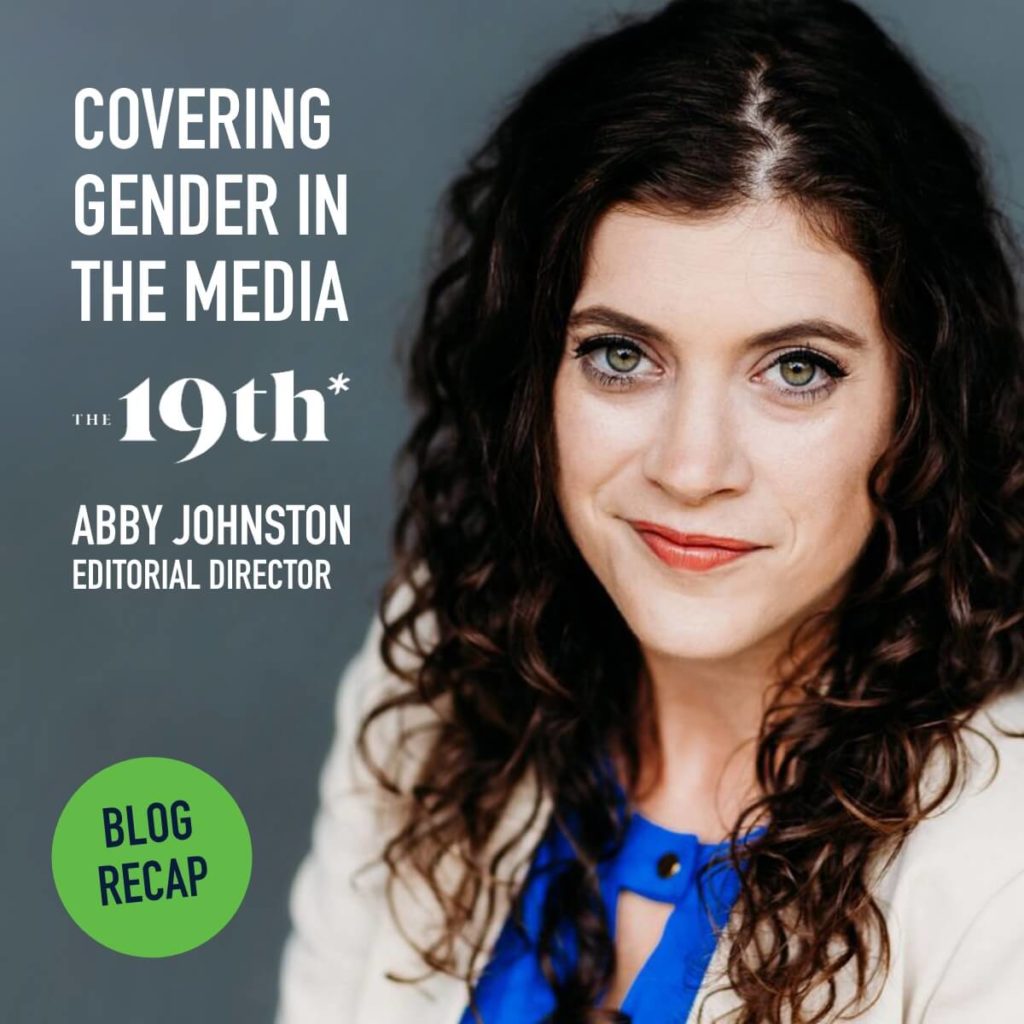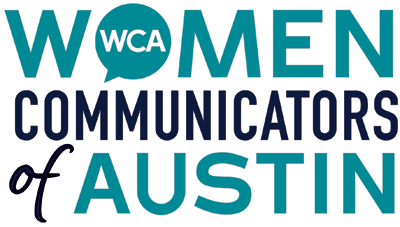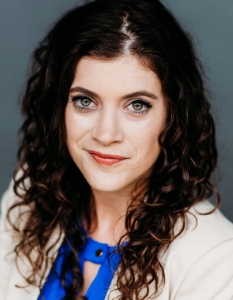
Taking time out from her busy schedule, Abby Johnston, editorial director of The 19th, provided WCA members with invaluable insights into “Covering Gender in the Media.”
During this special WCA@Lunch on January 18, Johnston talked about how women’s and LGBTQ+ lenses are applied in selecting and researching stories and the role that this approach takes in offering an important perspective in the news world.
The concept behind The 19th evolved from when, while on maternity leave, co-founder Emily Renshaw was watching the reporting on the 2016 presidential election and began considering how the coverage might have differed if approached from a gender angle.
Launched in 2020 as a national news outlet, The 19th specifically focuses on politics and policy from the perspective of the disenfranchised. In logo form, the organization’s name includes an asterisk as a footnote reminder that although the 19th Amendment to the US Constitution granted the right to vote to women, suffrage remains a work in progress.
Johnston also noted that “women make up the majority in newsrooms, but not in the high ascending roles – i.e. those names at the top of the masthead.” The 19th’s “Our Story” further states that women and LGBTA+ people are “underrepresented in politics and policy journalism and in newsroom leadership, which influences what stories are told, how the news is covered and whose voices are elevated.”
So what does this mean in reporting and readership terms? “Headlines that readers won’t find anywhere else,” explained Johnston. At The 19th, the editors and reporters look beyond the obvious for those stories that would not have gotten covered. For example, they made headline news by researching and reporting on the economic impact of the pandemic shut-down as responsible for “America’s first female recession.”
With a gender focus and a newsroom that functions as an independent nonprofit organization, The 19th is also able to look at and tell the “bigger story.” Writers are given the opportunity, and the time, to put “humans at the center of the story.” By talking to people and letting them tell of their experiences, readers gain a better understanding of the impact a policy actually has upon real people. Similarly this approach gives context and meaning to the reporting of data and numbers.
In addressing the question of why focus on Women and LGBQT+ issues and perspectives, Johnston talked about not only the fact that women still face pay inequities, but that these differences are even greater for women of color and those who are a part of the LGBQT+ community. She also addressed the types of changes that can be and are achieved with educational attainment for the marginalized and unheard.
By using a gender lens, Johnston further explained, The 19th gains the benefit of greater specificity. Looking at the intersections and how particular issues impact specific groups often unlocks and enriches the stories to be told. It also means that sometimes the organization has to “sit out” on reporting on events.
While some news items are an obvious fit for The 19th, others require more thoughtful consideration. From Johnston’s perspective, seeking out trends rather than focusing on one instance or individual provides for much more interesting and meaningful coverage. She and her staff search out data and sources that can provide greater and deeper insights. She acknowledges that data gaps, especially as related to race, gender and sexual orientation/identification make this part of their job even more challenging.
Other angles taken in developing their stories, noted Johnston, come from understanding the “isms” (sexism, racism, homophobia, etc.) and how these biases impact coverage. She also noted the importance of a “willingness to hop on a phone to find more information” and the latitude given to writers to take the time to do the necessary research that further contributes to The 19th‘s success.
- From Glass Ceilings to Glass Staircases: A Q&A Panel Discussion - March 26, 2023
- Covering Gender in the Media: A WCA@Lunch Program Recap - February 27, 2023
- Lessons from a 25-Year Serial Entrepreneur - January 23, 2023

